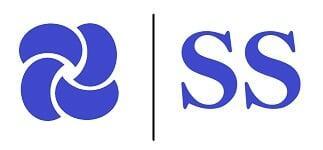How to give successful Interview?
A successful job interview involves preparation, execution during the meeting, and a strong follow-up. Here is a comprehensive breakdown of the
steps you should take:
Phase 1: Preparation (Before the Interview)
Thorough preparation is the most critical step and will significantly boost your confidence.
1. Research the Company and Role
- Company Deep Dive: Go beyond the "About Us" page. Research the company's mission, values, culture, recent news/projects, competitors, and industry trends. This shows genuine interest.
- Analyze the Job Description: Break down the job requirements (technical and soft skills). Identify your experience and achievements that directly match those requirements.
2. Prepare Your Answers
- Common Questions: Prepare and practice concise, professional answers to standard questions like:
- "Tell me about yourself" (keep it professional, 1-2 minutes).
- "Why are you interested in this role/company?"
- "What are your greatest strengths and weaknesses?"
- "Where do you see yourself in five years?"
- Behavioral Questions (Use STAR Method): For questions that ask you to "Describe a time when..." use the STAR method to structure your responses, focusing on your specific actions and results.
- Situation: Describe the context or challenge.
- Task: Explain your responsibility in that situation.
- Action: Detail the steps you took to address the task.
- Result: State the positive outcome of your actions (quantify results when possible).
- Your Questions for the Interviewer: Prepare 3-5 thoughtful questions to ask at the end. These should demonstrate your understanding of the role and the company. Avoid asking about salary or benefits unless the interviewer brings it up.
3. Handle Logistics and Appearance
- Plan Your Route/Setup: If in-person, map your route and plan to arrive 10-15 minutes early. If virtual, test your tech (internet, camera, microphone) and ensure your background is clean and well-lit.
- Dress Professionally: Choose a clean, well-fitting, business-professional outfit that is appropriate for the company culture. It's often best to dress "one level up" from the company's daily attire.
- Gather Documents: Prepare a professional folder with:
- Several copies of your resume.
- A pad and pen for taking notes.
- Your list of prepared questions and company research.
- The interviewer's name and contact information.
Phase 2: Execution (During the Interview)
The interview is your opportunity to present yourself positively and build rapport.
1. Make a Strong First Impression
- Arrive on Time: Be early (10-15 minutes).
- Professional Greeting: Greet the interviewer(s) with a confident smile and a firm handshake (if in-person). Be polite to everyone you meet.
- Mind Your Body Language: Maintain good posture (sit up straight, lean in slightly), make comfortable eye contact, and avoid nervous habits like fidgeting or excessive nodding.
- Silence Your Phone: Turn off all notifications or leave your phone in your car/bag.
2. Engage and Communicate Effectively
- Listen Actively: Pay close attention to the question being asked. If you need clarification, politely ask the interviewer to restate or clarify the question.
- Be Concise and Direct: Answer questions truthfully, focusing on how your skills and achievements fit the job. Avoid rambling.
- Stay Positive: Never speak negatively about a previous employer, manager, or co-worker. If addressing a difficult past experience, focus on what you learned and how you grew from it.
- Highlight Your Value: When discussing your experience, use "I" to own your accomplishments and provide specific, relevant examples.
- Take Notes: Briefly jot down key points or follow-up questions you may want to ask later.
3. Close the Interview Strong
- Ask Your Questions: When the interviewer asks if you have any questions, use your prepared list. This demonstrates your engagement.
- Reiterate Interest: Close the interview by reinforcing your enthusiasm for the position and the company.
- Next Steps: Ask about the timeline for the hiring process and when you can expect to hear back.
- Thank the Interviewer: Thank the interviewer for their time and the opportunity.
Phase 3: Follow-Up (After the Interview)
The process is not over until you send a thank-you note.
1. Send a Thank-You Note
- Timeliness: Send a personalized thank-you email within 24 hours of the interview.
- Content:
- Express appreciation for their time.
- Reference something specific you discussed (e.g., a challenge for the team or a project) to show you were listening.
- Briefly re-affirm your interest in the role and why you are the best fit.
- This is an opportunity to add a brief point you may have forgotten to mention in the interview.
2. Self-Reflection
- Review: Immediately after the interview, write down the questions you were asked and how you answered them.
- Improve: Identify areas where you could have elaborated or where your answers were weak. Use this for future interviews.
You can edit text on your website by double clicking on a text box on your website. Alternatively, when you select a text box a settings menu will appear. your website by double clicking on a text box on your website. Alternatively, when you select a text box.







